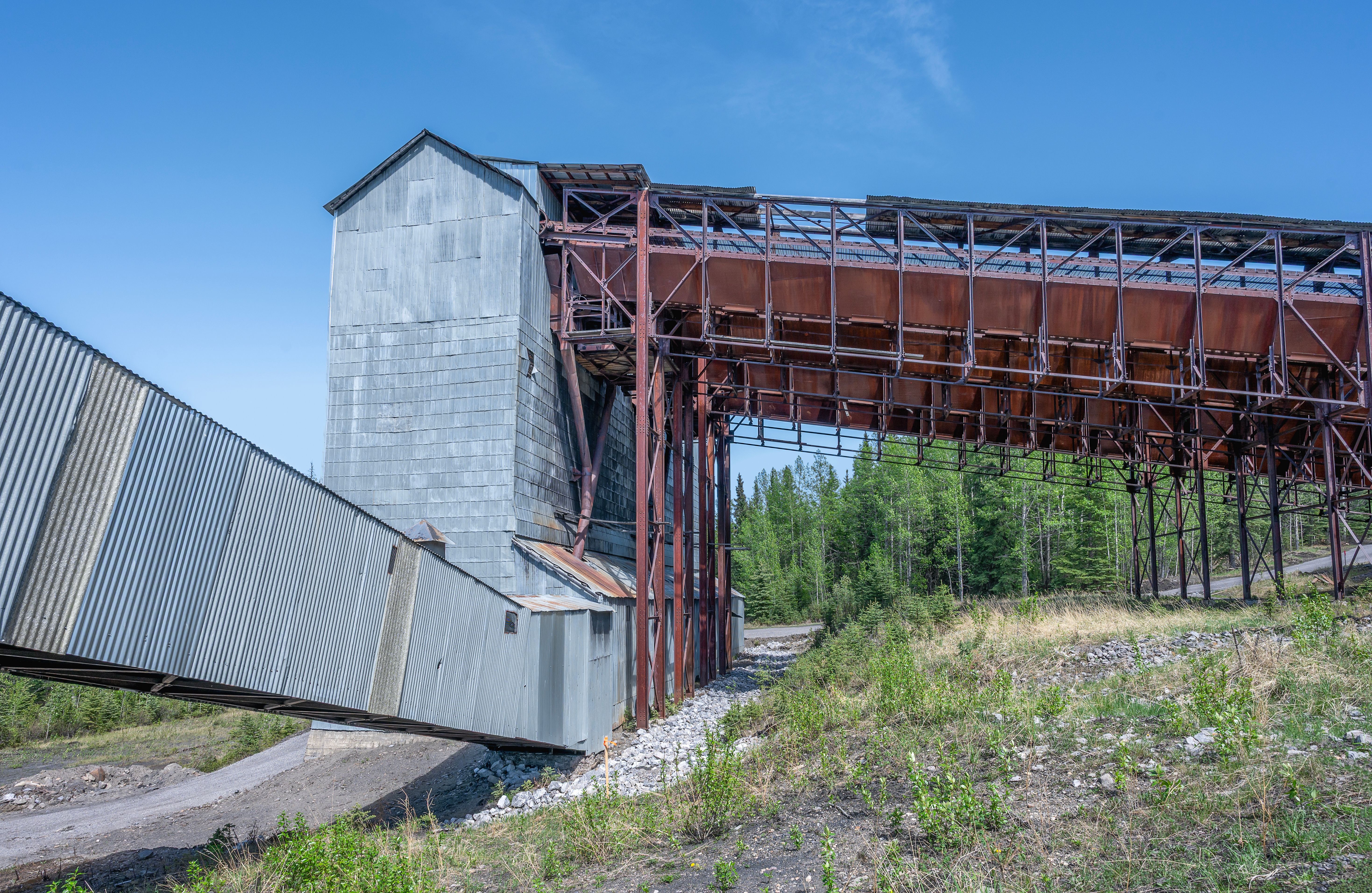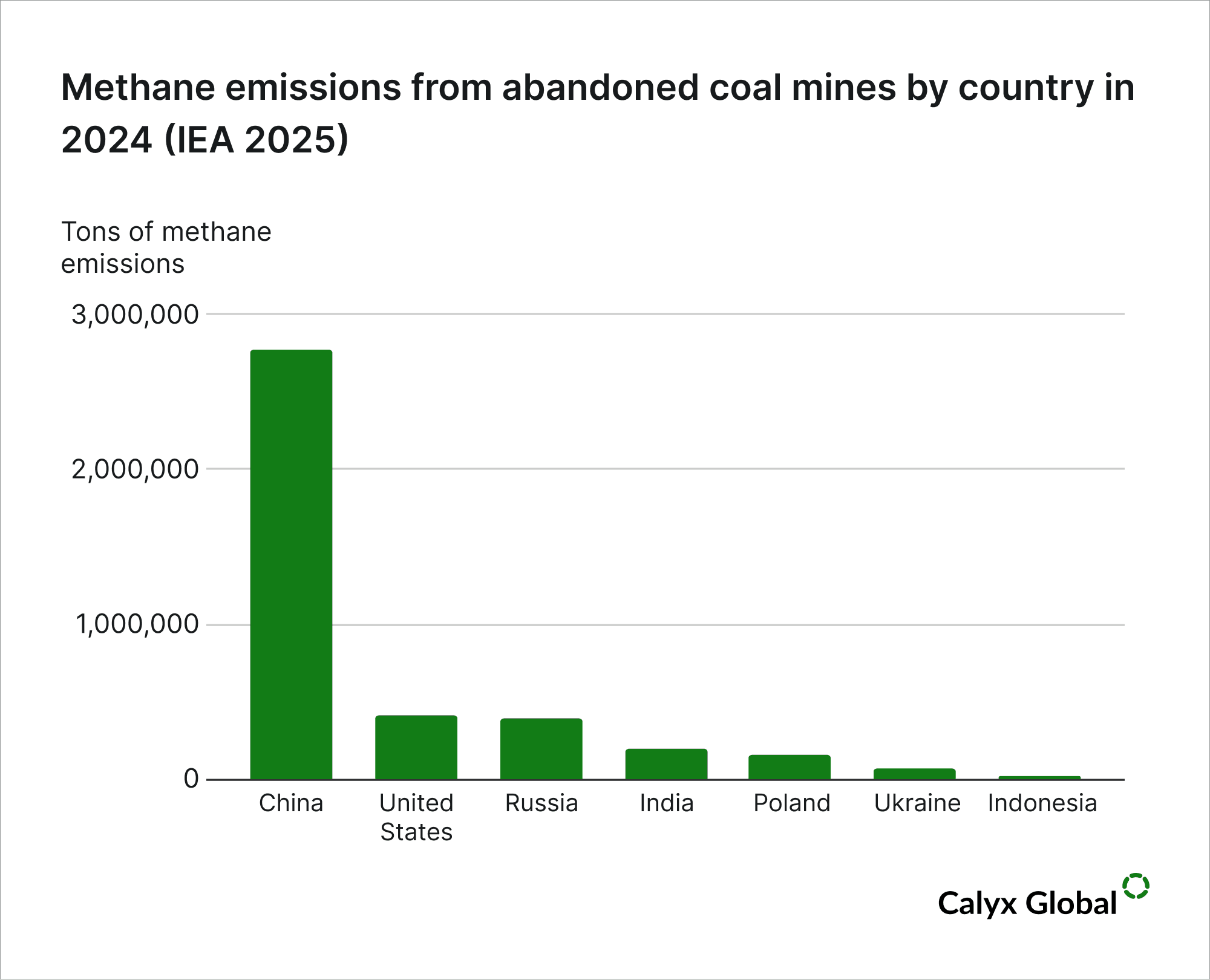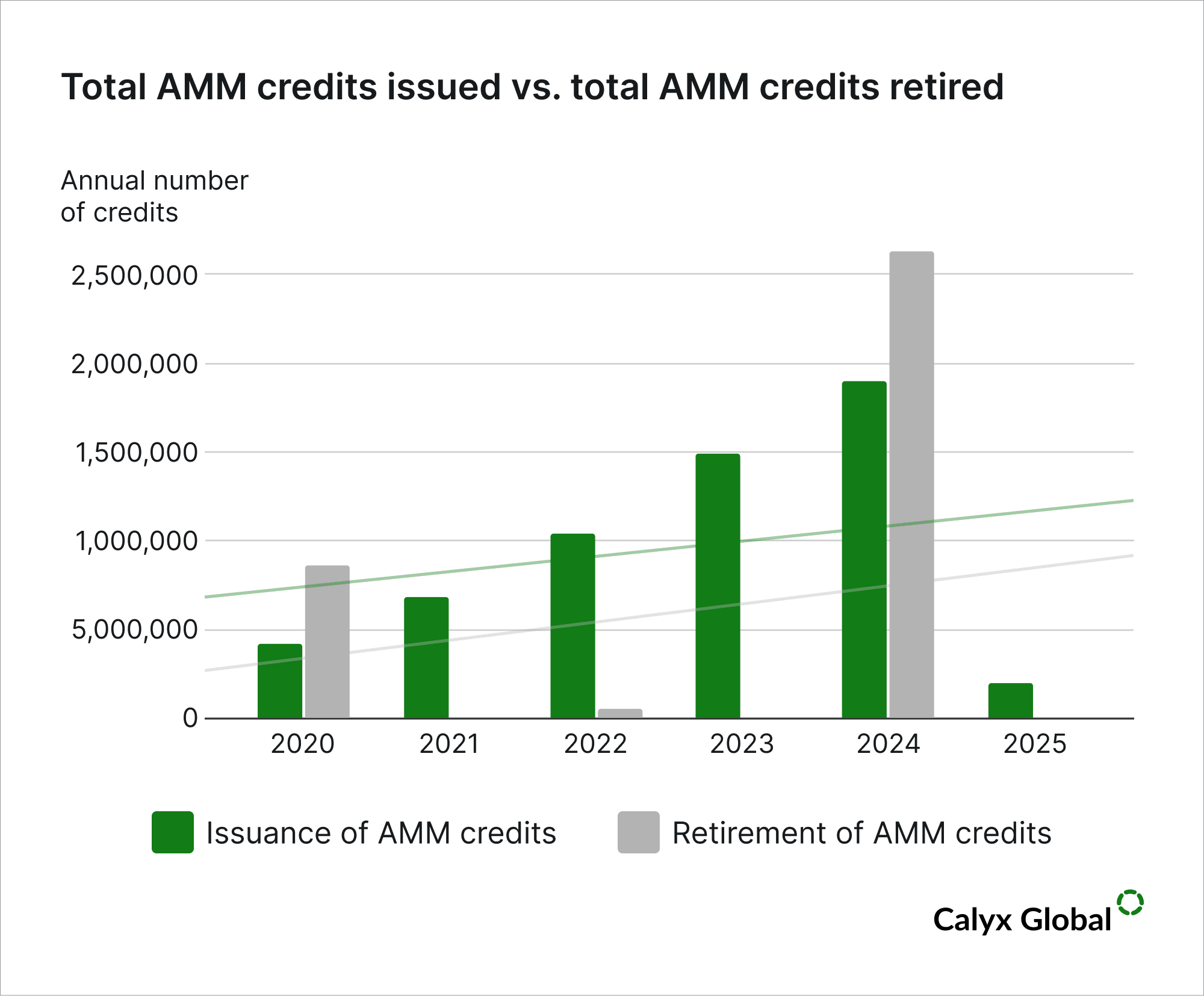
Abandoned mine methane (AMM): what it is, where projects are, and what to watch for
October 29, 2025 - Research
Project spotlight
Calyx Global recently released its first credit rating from an AMM carbon project. The credits issued to ACR 812 as of October 2025 have a Tier 1 GHG integrity rating. For more information, subscribers can see the full rating here.
What is abandoned mine methane (AMM) and how are AMM emissions addressed?
Methane gas can escape into the atmosphere through seals, shafts and fractures for decades after a mine closes. AMM projects capture methane that would otherwise be emitted freely into the atmosphere. The methane gas is then either combusted to generate electricity in power systems (such as engines, turbines or boilers), conditioned for pipeline use or destroyed in enclosed flares or thermal oxidizers.
AMM carbon crediting methodologies and eligible activities
| Methodology name | Applicable registries | Relevant regions | Eligible activities |
| Compliance Offset Protocol (from the California Air Resources Board) - Capturing and Destroying Methane From U.S. Coal and Trona Mines (Version 1.0, last updated on April 25, 2014) | Projects developed under the CARB protocol can be listed on the ACR or Climate Action Reserve (CAR) registries | United States | AMM end-use management strategies other than pipeline injection |
| ACM0008: Abatement of methane from coal mines (Version 8.0, last updated on February 21, 2014) | Projects developed under this methodology can be listed on the Clean Development Mechanism (CDM) or Verra (VCS) registries | UNFCCC CDM: non-Annex I countries VCS: Anywhere | AMM destruction (flaring) and electricity generation |
| Capturing and Destroying Methane from Coal and Trona Mines in North America by ACR (Version 1.1, last updated on August 29, 2023) | Projects developed under this methodology can be listed on the ACR registry | North America | AMM destruction (flaring) and pipeline injection |
If you’re interested in comparing methodology risks and opportunities across AMM or other project types, reach out for a demo of Calyx Compass.
Why does mitigating AMM emissions matter now?
Methane emissions account for about 30 percent of global warming and trap significantly more heat than carbon dioxide in the short term (IEA 2022). The IEA Global Methane Tracker estimates that in 2024, abandoned mines from around the world emitted over 4 million tons of methane (IEA 2025), equivalent to at least 120 million tons of CO2 equivalent emissions , and comparable to the annual emissions of 27 million cars. The countries with the highest AMM emissions are China, the United States and Russia, indicated in the figure below.

A global overview of AMM projects
To date, many AMM carbon crediting projects have been developed in the United States for California’s emissions trading system using its Mine Methane Capture Compliance protocol. Most of these projects involve methane destruction via flaring. Outside the U.S., a number of methane end-use management projects have been implemented without carbon revenue support, especially in Germany, the United Kingdom and the Czech Republic (UNECE 2017). These projects are generally self-financed and use AMM to generate electricity or condition the methane for pipeline injection, which can then be sold as an energy source.
AMM carbon credit supply and demand trends
Total AMM credit retirements fluctuated between 2020 and 2025, while issuances have steadily increased through 2024. Issuances and retirements peaked in 2024 with 1.8 million credits issued and 2.6 million credits retired (Haya et al., 2025). The large majority of these were issued and retired as CARB compliance credits, although California allows such credits in its registry to be used for voluntary purposes. Credit issuances may continue to increase as more AMM carbon crediting projects are developed across abandoned mines in the United States. The graph below shows AMM credit issuances and retirements through June 2025 (Haya et al., 2025).

Conclusion
Overall, AMM projects have the potential to generate measurable methane emission reductions. As mines reach the end of their operating lives and countries phase coal out of their electricity generation portfolios, the number of abandoned coal mines will also increase. AMM projects are well-positioned to deliver climate benefits while bridging the gap for countries transitioning from coal-based power generation to natural gas or renewable energy.
Citations
Barbara K Haya, Tyler Bernard, Aline Abayo, Xinyun Rong, Ivy S. So, Micah Elias. (2025). Voluntary Registry Offsets Database v2025-06, Berkeley Carbon Trading Project, University of California, Berkeley. Retrieved from: https://gspp.berkeley.edu/berkeley-carbon-trading-project/offsets-database.
IEA. (2022). Global Methane Tracker 2022. IEA. Paris https://www.iea.org/reports/global-methane-tracker-2022, Licence: CC BY 4.0
IEA. (2025). Global methane tracker 2025. https://iea.blob.core.windows.net/assets/2c0cf2d5-3910-46bc-a271-1367edfed212/GlobalMethaneTracker2025.pdf
UNECE. (2017). Proper management of abandoned mine methane is vital for reducing greenhouse gas emissions | UNECE. https://unece.org/sustainable-energy/news/proper-management-abandoned-mine-methane-vital-reducing-greenhouse-gas
Keep up with carbon market trends
Get the monthly newsletter and stay in the loop.
Trusted By





